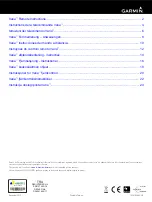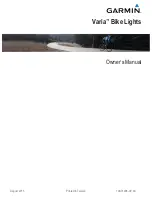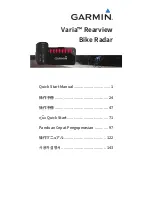
75
Before every ride
3.
Before every ride
3.1. Checking the tyres
The tyre manufacturer Continental allows 3,0-4,0 bar of pressure for the Contact 47-
622 tyre. The following applies:
•
The greater your weight, the higher the air pressure you should choose.
•
The rear tyre should be driven with slightly more pressure than the front tyre
(0.2-0.5 bar), as about 60% of the weight is applied to the rear wheel.
We recommend that you check the pressure every 2 to 4 weeks, as bike
tubes continuously and inevitably lose air.
If the tyre pressure is too low, the risk of snakebite punctures increases.
The result of a snakebite puncture is a flat tyre.
A tyre damaged by cracks or foreign objects may lose its pressure. There is
a risk of accident!
-> Check for cracks or foreign objects in the tyre.
3.2. Checking the brake system
•
Perform a brake test when at a standstill before every ride. To do so, pull each
brake lever individually towards the handlebar with normal braking force. The
brake lever must not touch the handlebar grip.
•
Move the vehicle back and forth with the brake applied. There must be no
significant play. If there is, get to the root of the cause. The calliper or brake disc
may not be tightened. Tighten them to the torque values in the torque table in
section 9.3.
•
For hydraulic disc brakes, the pressure point on the brake lever must be stable.
If the pressure point is not reached after two-thirds of the lever stroke, pull
the lever several times in succession ("pumping"). Check if the pressure point
stiffens. In this case and if the location of the pressure point moves while riding,
the brake system must be bled
•
The brake discs must be free of oil. If you find oil on the brake discs, remove it
with an alcohol-soaked cloth.
Summary of Contents for SD3 Urban
Page 1: ...SD3 Urban Originalbetriebsanleitung Manual p 63 ...
Page 2: ......
Page 63: ...SD3 Urban Pedelec Manual Translation 63 ...
Page 122: ...122 Notes ...
Page 123: ...123 Notes ...
Page 124: ......
















































